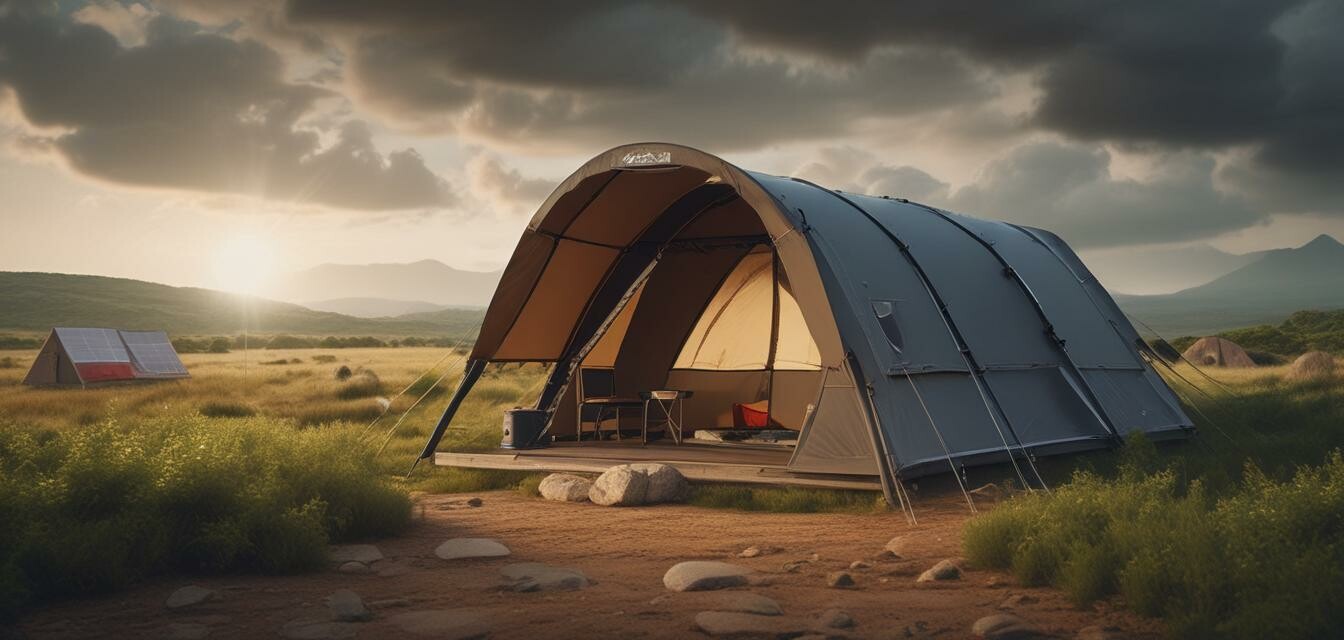
Tips for using solar gear in overcast conditions
When you're out camping, especially during unpredictable weather, knowing how to effectively use solar gear can make a significant difference. Even in overcast conditions, you can maximize energy usage from your solar-powered camping shelter. Here are some tips to optimize your experience.
Key Takeaways
- Position solar panels for optimal exposure.
- Use energy-efficient appliances to make the most of limited power.
- Understand your battery storage systems for better energy management.
- Learn to supplement solar power with other energy sources when necessary.
- Maintain your solar gear for longer lifespan and better performance.
Understanding solar energy in low-light conditions
Solar panels work best with direct sunlight, but they can still generate power in overcast weather. Solar energy capture is reduced, but not eliminated. Understanding how solar panels collect energy and adjusting their position can improve performance.
How solar panels work
Solar panels convert sunlight into electricity. The key factors affecting their performance are:
- Light intensity
- Angle of the panels
- Quality of the solar panels
Tips for maximizing solar energy usage during overcast conditions
| Tip | Description |
|---|---|
| 1. Adjust panel angles | Tilting your solar panels will help capture the most light possible from different angles. Experiment with various angles to see what works best. |
| 2. Use energy-efficient appliances | Opt for energy-efficient devices, as they consume less energy, allowing you to use your solar power more effectively. More tips can be found in our Buying Guides. |
| 3. Monitor weather conditions | Keep an eye on the weather forecasts and have backup plans for energy sources if prolonged overcast conditions are anticipated. |
| 4. Optimize battery storage | Make sure your solar batteries are optimally charged. Knowing how to handle your energy makes a big difference during cloudy days. |
| 5. Stored energy management | Use stored energy during night or cloudy days wisely, prioritizing essential devices to ensure maximum output when solar energy is low. |
Essential gear to consider
Investing in the right solar gear can enhance your camping experience. While camping with overcast skies, you might consider the following items:
- Portable solar panels - Compact and easy to set up.
- Solar camping tents - Integrated solutions that provide shelter and energy in one package.
- Solar lanterns and lights - Essential for visibility at night, even with limited energy.
Best practices for reducing energy consumption
Reducing energy consumption goes a long way in getting the most out of your gear on overcast days.
- Switch off unnecessary devices.
- Use natural light when possible.
- Limit device charging time.
Dealing with energy shortages
Sometimes, overcast days can limit the energy harvested. Here are some strategies:
- Have a backup generator or power bank.
- Consider using propane or camping stoves.
- Plan meals that require less cooking energy.
Pros
- Eco-friendly energy source.
- Reduces reliance on traditional fuel sources.
- Facilitates an independent camping experience.
Cons
- Limited energy production in low-light conditions.
- Requires maintenance for optimal performance.
- Initial investment cost may be high.
Conclusion
Camping with solar gear in overcast conditions can still be a rewarding experience with the right strategies in place. By understanding how to optimize your solar setup, you can ensure you have enough power for your camping needs, even when the sun isn't shining. Remember to check out more insights in our Expert Tips category for enhancing your solar camping experience.